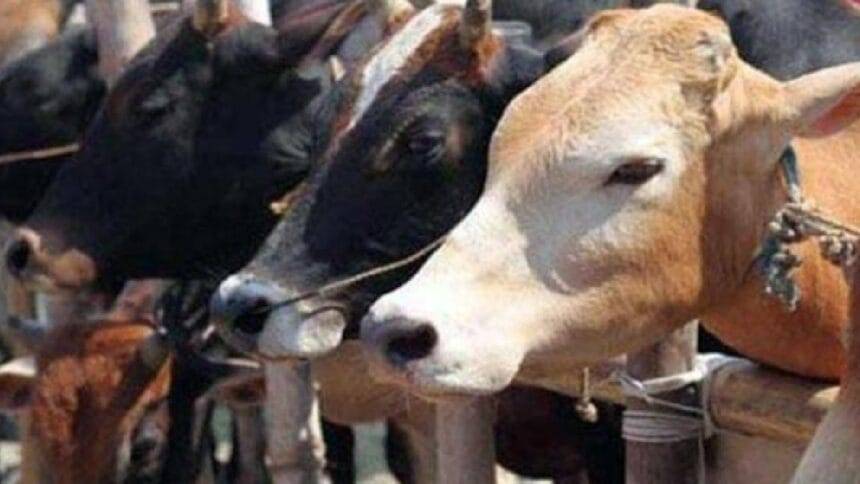Main Points In Hindi (मुख्य बातें – हिंदी में)
यहाँ पर डेयरी फार्म में रोज़ सफाई के महत्व पर मुख्य बिंदुओं का हिंदी में सारांश दिया गया है:
-
स्वच्छता का महत्व: डेयरी फार्म में रोजाना सफाई रखना आवश्यक है ताकि जानवर बीमारियों से सुरक्षित रहें और भारत के खाद्य सुरक्षा और मानक प्राधिकरण (FSSAI) के नियमों का पालन किया जा सके। इससे दूध भी प्रदूषित नहीं होता है।
-
कचरे का निपटान: गायों के अस्तबल में कचरे का सही Disposal स्वास्थ्य के लिए महत्वपूर्ण है। गाय का गोबर अच्छे खाद के रूप में उपयोग किया जा सकता है और इससे बायोगैस का उत्पादन भी किया जा सकता है।
-
सफाई के उपाय: डेयरी फार्म की सफाई के लिए पानी के साथ खाद और अन्य कचरे को फ्लश करना, ठोस कचरे को अच्छे से इकट्ठा करके हटाना और उचित ड्रेनेज सिस्टम का निर्माण करना शामिल है।
-
द्रव और ठोस गंदगी का प्रबंधन: द्रव गंदगी को सही तरह से संयोजित करने और उसे सहेजने के लिए उचित ड्रेनेज सिस्टम की आवश्यकता होती है। इससे गंदगी का प्रभावी प्रबंधन होता है।
- फसल के लिए उपयोग: मिश्रित धोने के पानी का उपयोग सीधे चारे के खेतों में किया जा सकता है या इसे बायोगैस संयंत्रों में slurry के रूप में उपयोग किया जा सकता है, जिससे किसान को अतिरिक्त आय हो सकती है।
इन बिंदुओं के माध्यम से यह स्पष्ट होता है कि सफाई केवल स्वास्थ्य के लिए ही नहीं, बल्कि आर्थिक लाभ के लिए भी अत्यंत आवश्यक है।


Main Points In English(मुख्य बातें – अंग्रेज़ी में)
Here are the main points from the text regarding daily cleaning on a dairy farm:
-
Importance of Cleanliness: Daily cleaning on a dairy farm is crucial not only for preventing diseases among animals but also for adhering to the regulations set by the Food Safety and Standards Authority of India (FSSAI). A clean environment helps ensure milk quality and prevents contamination.
-
Waste Management: Proper disposal of waste in the cowshed is essential for animal health. Manure can be utilized as fertilizer for crops, and cow dung can be converted into biogas, providing an additional source of income for farmers.
-
Cleaning Procedures: Effective cleaning involves using hose pipes to flush out waste, collecting solid waste with shovels, and properly managing liquid manure through a network of drains. This ensures proper drainage and prevents the accumulation of waste.
-
Drainage System: A well-designed drainage system is essential for handling liquid waste, which should channel through inspection and settling chambers to storage tanks. This helps in the efficient management of liquid manure.
- Manure Storage: Solid manure should be collected separately and stored in a compost pit to ensure proper decomposition and to prevent pest infestations, promoting a healthier environment for both animals and humans.
Complete News In Hindi(पूरी खबर – हिंदी में)
डेयरी फार्म में रोजाना सफाई बहुत महत्वपूर्ण होती है। सफाई बनाए रखने से केवल जानवरों को बीमारियों से बचाने में मदद नहीं मिलती, बल्कि यह भारत के खाद्य सुरक्षा और मानक प्राधिकरण (FSSAI) के नियमों का पालन करने में भी मदद करता है, जिससे जुर्माने का कोई खतरा नहीं रहता। इसके अलावा, साफ-सफाई के कारण दूध भी दूषित नहीं होता। जैव सुरक्षा के तहत सफाई के मानकों को अपनाने से मनुष्य और जानवरों के लिए छोटी या बड़ी सभी प्रकार की बीमारियों का कोई भी खतरा नहीं होता।
एक साथ, गाय के स्थान में कचरे का निपटान करना जानवरों के स्वास्थ्य के लिए बहुत महत्वपूर्ण है। ताकि कचरा किसी प्रकार की बीमारी का कारण न बने। फार्म से निकलने वाला गोबर अन्य फसलों और चारे के लिए अच्छे खाद के रूप में संग्रहित किया जा सकता है। साथ ही, किसान गाय के गोबर से बायोगैस के रूप में अतिरिक्त कमाई भी कर सकते हैं।
और पढ़ें: ग्लैंडर्स: घोड़ों, गधों और खच्चरों के आंदोलन पर प्रतिबंध, जानें किस राज्य ने यह निर्णय लिया
डेयरी फार्म में सफाई के लिए करें यह काम
- डेयरी फार्म में सफाई के लिए हॉज पाइप का उपयोग करें।
- हॉज पाइप की मदद से गोबर और अन्य कचरे को पानी के साथ बहा दें।
- ठोस कचरे को फावड़े की मदद से इकट्ठा करें और हाथ की गाड़ी से गाय के शेड से बाहर ले जाएं।
- बड़े गाय के शेड में, बैल गाड़ी या ट्रैक्टर ट्रॉली का उपयोग किया जा सकता है।
- तरल कचरा और गाय के शेड का पानी नालियों के जरिए बहाना चाहिए और वहां जमा करना चाहिए।
- नाला “यू” आकार में होना चाहिए, इसकी गहराई 6-8 सेंटीमीटर और चौड़ाई 30-40 सेंटीमीटर होनी चाहिए।
- डेयरी फार्म और पशुपालन शेड की नालियों में उचित ढलान रखी जानी चाहिए।
- बड़े पशु शेड में, सभी नालियों को एक साथ मिलाना चाहिए।
- प्रत्येक शेड से निकलने वाला तरल कचरा गाय के शेड के बाहर नालियों से जोड़ा जाना चाहिए, विशेषकर मुख्य फार्म की बंद या सतह की नालियों से।
- नाला इस तरल कचरे को निरीक्षण कक्ष और जमाव कक्ष के माध्यम से तरल कचरे के भंडारण टैंक में ले जाता है।
- यदि पर्याप्त पानी उपलब्ध है, तो फर्श को प्रेशर वॉश किया जाना चाहिए और तरल और ठोस कचरे को खुले क्षेत्र में ले जाना चाहिए।
- गाय के शेड में पर्याप्त चौड़ाई की नालियों का निर्माण आवश्यक है।
- यह मिश्रित धोने का पानी सीधे चारे के खेतों में ले जाया जा सकता है या बायोगैस संयंत्रों में slurry के रूप में उपयोग किया जा सकता है।
- ठोस कचरे को अलग से इकट्ठा करें और इसे सही तरीके से कंपोस्ट पिट में संग्रहित करें।
- इस तरह से, खाद सही तरीके से सड़ जाएगा और Fly infestation नहीं होगी।
और पढ़ें: मदर डेयरी और उत्तराखंड ने गिर-बद्री गाय के दूध से बनाया हुआ घी और ट्रेसबिलिटी सिस्टम लॉन्च किया।
Complete News In English(पूरी खबर – अंग्रेज़ी में)


Daily cleaning is very important in a dairy farm. By maintaining cleanliness, while the animals are not at risk of disease, maintaining cleanliness also fulfills the rules of the Food Safety and Standards Authority of India (FSSAI) and there is no fear of fines etc. Not only this, because the dairy farm remains clean, the milk also does not get contaminated. Now, by adopting the standards of cleanliness under bio security, there is no occurrence of all kinds of diseases, even minor or major, to humans and animals.
At the same time, it is very important to dispose of the waste in the cowshed for the health of the animals. So that garbage does not become the cause of any kind of disease. The dung coming out of the farm can be stored as a good fertilizer for fodder and other crops. At the same time, farmers can also earn extra in the form of bio gas from cow dung manure.
Also read: Glanders: Ban imposed on movement of horses, donkeys and mules, know which state took the decision
Do this work for cleaning in dairy farm
- Use hose pipe for cleaning in dairy farm.
- With the help of a hose pipe, cow dung and other waste should be flushed out together with water.
- Collect the solid waste with shovels and take it away from the cattle shed in a handcart.
- In big cattle sheds, bullock cart or tractor trolley can be used for this.
- Liquid manure and cattle shed wash should be carried through drains to the junction of open and closed areas. It should be settled there.
- The drain should be made in “U” shape, its depth should be 6-8 cm, width should be 30-40 cm.
- Suitable slope should be kept in the drains of dairy farms and animal husbandry sheds.
- In large animal sheds, all drains should be combined into one.
- The liquid manure coming out of every shed outside the cattle shed should be connected to the drains, especially the closed or surface drains of the main farm.
- The drain takes this liquid manure through an inspection chamber and settling chamber to a liquid manure storage tank.
- If sufficient water is available, the floor should be pressure washed and the liquid and solid manure should be taken to an open area.
- Construction of a network of drains of sufficient width in the cattle shed is an essential requirement.
- This mixed wash water can be taken directly to fodder fields or used as a slurry in biogas plants.
- Solid manure should be collected separately and stored properly in the compost pit.
- In this way the manure will decompose properly and there will be no fly infestation.
Also read: Mother Dairy and Uttarakhand launched ghee made from Gir-Badri cow milk and traceability system.




